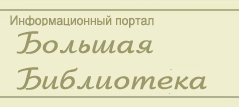Другое : Fuseli, Henry
Fuseli, Henry
Fuseli, Henry
Fuseli,
Henry (Johann Heinrich Füssli) (1741-1825). Swiss-born painter,
draughtsman, and writer on art, active mainly in England, where he was one of
the outstanding figures of the Romantic movement.
He
was the son of a portrait painter, Johann Caspar Füssli (1707-82), but he
originally trained as a priest; he took holy orders in 1761, but never
practised. In 1765 he came to London at the suggestion of the British
Ambassador in Berlin, who had been impressed by his drawings. Reynolds
encouraged him to tape up painting, and he spent the years 1770-78 in Italy,
engrossed in the study of Michelangelo, whose elevated style he sought to
emulate for the rest of his life. On his return he exhibited highly imaginative
works such as The Nightmare (Detroit Institute of Arts, 1781), the picture that
secured his reputation when it was shown at the Royal Academy in 1782 (there is
another version in the Goethe-museum, Frankfurt). An unforgettable image of a
woman in the throes of a violently erotic dream, this painting shows how far
ahead of his time Fuseli was in exploring the murky areas of the psyche where
sex and fear meet. His fascination with the horrifying and fastastic also comes
out in many of his literary subjects, which formed a major part of his output;
he painted several works for Boydell's Shakespeare Gallery, and in 1799 he
followed this example by opening a Milton Gallery in Pall Mall with an
exhibition of forty-seven of his own paintings.
Fusely
was a much respected and influential figure in his lifetime, but his work was
generally neglected for about a century after his death until the
Expressionists and Surrealists saw in him a kindred spirit. His work can be
clumsy and overblown, but at its best has something of the imaginative
intensity of his friendBlake, who described Fuseli as `The only man that e'er I
knew / who did not make me almost spew'. Fuseli's extensive writings on art
include Lectures on Painting (1801) and a translation of Winckelmann's
Reflections on the Painting and Sculpture of the Greeks (1765).
Список
литературы
Для подготовки данной работы
были использованы материалы с сайта http://www.ibiblio.org/louvre/paint/
|


